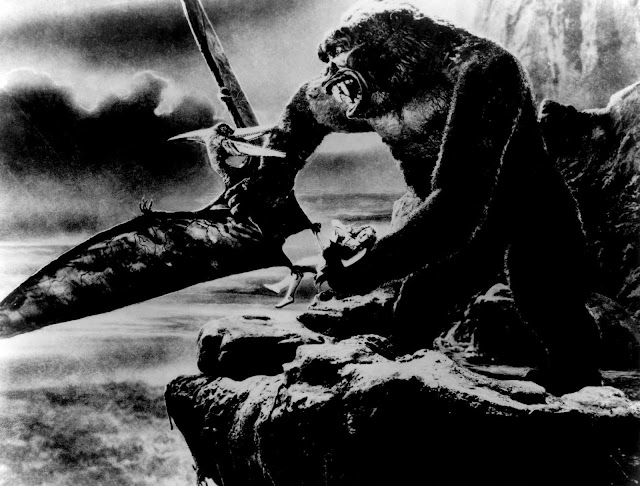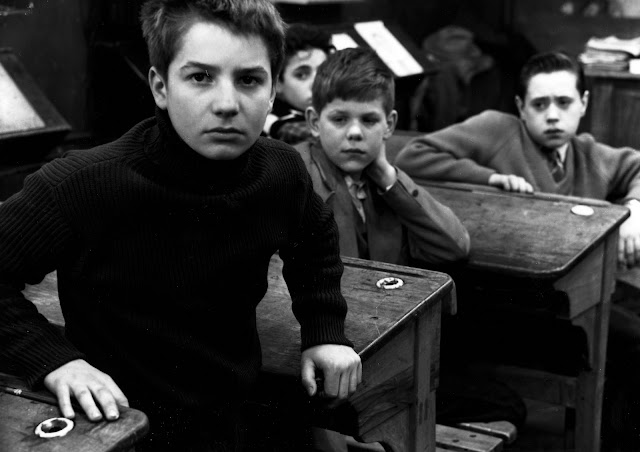La Dolce Vita (1960)
Federico Fellini's "La Dolce Vita"
The famed Italian poet and director Pier Paolo Pasolini once said that Federico Fellini's 1960 masterpiece "La Dolce Vita" was too important to be discussed in the usual way one discusses a film. I absolutely agree. "La Dolce Vita" is not only a monolith in cinematic history - it set a new precedent for how films could be constructed. Its DNA lies in the very components of modern cinematic convention. The themes and narrative beats remain as relevant today as they were in 1960, lending the film a remarkable sense of timelessness. To call "La Dolce Vita" a masterpiece almost feels like an understatement.
The film departs from traditional narrative structure, unfolding instead through a series of interconnected episodes. Marcello Mastroianni stars as Marcello Rubini, a tabloid journalist who aspires to write literature. Navigating the glamorous yet hollow world of Rome's café society, he spends the night with an heiress, attempts to court a Swedish actress, covers fake religious miracles, goes to lavish parties, and spends white nights with careless and debauched aristocrats.
Abandoning traditional character development, Fellini construct the film as a series of non-linear encounters between Marcello and a sprawling ecosystem of characters - each interaction forming part of a Dantesque descent into a modern underworld. Through these various episodes, Fellini's compositions and character arrangements take on a carnivalesque, grotesque quality. Many of the figures appear less like fully fleshed-out individuals and more like exaggerated caricatures. The film unfolds like a surreal carnivalesque slideshow of fleeting situations, preventing the viewer from feeling connected to any particular circumstance or focused narrative. Instead, the audience is invited to weave these disparate episodes into a singular, immersive experience - one that offers a collective vision rather than a conventional story.
As the film weaves its episodic encounters into a singular experience, the viewer is left with a palpable sense of post-war fatigue - witnessing the moral decay, descent into sensationalism, and a meditation on vice that defines the social landscape. It opens with a striking image: a helicopter carrying a golden statue of Christ over the ruins of an ancient Roman aqueduct, en route to the Pope at the Vatican. The statue then flies over a more modern Rome, filled with high-rise buildings and bikini-clad women. This transition captures the essence of post-war Italy - a veneer of glitz, glamor, and modernity layered over the crumbling ruins of ancient Rome and, more symbolically, the erosion of traditional morality. As Marcello spirals deeper into the seductive world of modern wealth and abundance, the grotesqueness of moral depravity becomes more stark. He years for connection, searching for love and meaning amongst the decadence. But the more he seeks substance in this glittering world, the more he is met with emptiness - revealing a world where meaning has all but vanished.
One of the most striking images that lingers in my mind from the film is in the scene in which a large crowd gathers on the outskirts of Rome to witness two children who claim to see the ghostly apparition of the Virgin Mary. The crowd grows frenzied, eventually tearing down a tree after the children insist the Madonna appeared there. That image - the mob dismantling the tree in a desperate attempt to claim a piece of the miracle - is for me, the single most powerful moment in the film. It encapsulates the film's central theme: humanity's restless impulse to consume and destroy the world around them in pursuit of their desires, superstitions, and craven delusions. It is a moment both absurd and profound, revealing a deep spiritual emptiness masked by spectacle and frenzy.
"La Dolce Vita" offers a wealth of elements ripe for deeper exploration, but at its core, the film is a profound meditation on post-war modernity. Nineteenth-century philosopher Friedrich Nietzsche once envisioned the cultural landscape of the coming century, predicting that the death of religion—and with it, the "death of God"—would usher in a profound social nihilism. This void, he argued, would demand new gods to fill the chasm left by the collapse of moral and spiritual frameworks. In "La Dolce Vita," we see that very vision realized.
I would go so far as to say that "La Dolce Vita" stands as perhaps the most compelling tableau of twentieth-century modernity in all of twentieth-century art. Its characters have not merely drifted from religious morality—they have replaced it entirely with the sensational lure of vice and materialism. Fellini presents a post-war society defined by consumerism, consumption, and the shallow pursuit of pleasure. His Rome is a glittering mirage, masking the vacuity of its inhabitants—souls stripped of purpose, grasping at indulgence as a substitute for meaning.
The film reveals a humanity that has been hollowed out. Comfort and wealth, rather than delivering fulfillment, have bred malaise and spiritual decay. Consumption becomes the only available remedy for the existential void—an inadequate salve that merely deepens the wound. It is a portrait of a society damned by its own desires, spiraling into depravity and the soulless numbing of modern life. In Fellini’s hands, this is not merely a critique—it is a warning.
The film's structure and thematic relevance established a precedent for many films that followed in the latter half of the 20th century. One can think of many stories where a protagonist is drawn to a certain ideal, attracted by its shiny allure. At first, this ideal offers the protagonist the life and glamour that seem to satisfy every desire. However, as in "La Dolce Vita," as the narrative unfolds, the protagonist begins to morally and mentally devolve. What once brought fulfillment now fails to provide any spark or emotional resonance. In this way, the fame and glamour depicted in the film function like a drug, with all the hollowing effects that come with addiction.
I could continue to explore Fellini's masterful depiction of the deteriorating morality of the 20th century, his personification of vice, the rise of sensational materialism, and much more. But, much like Pasolini's earlier remarks, "La Dolce Vita" is too monolithic and expansive to be fully dissected in its entirety. Its reach and complexity resist a singular interpretation, leaving much to reflect upon long after the film ends.




Comments
Post a Comment